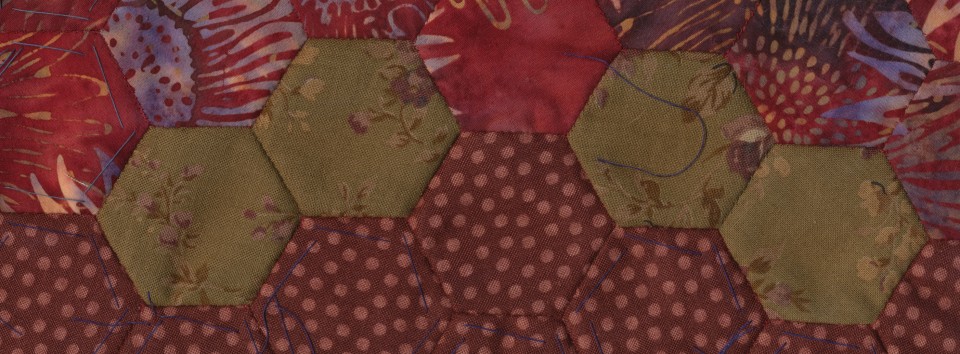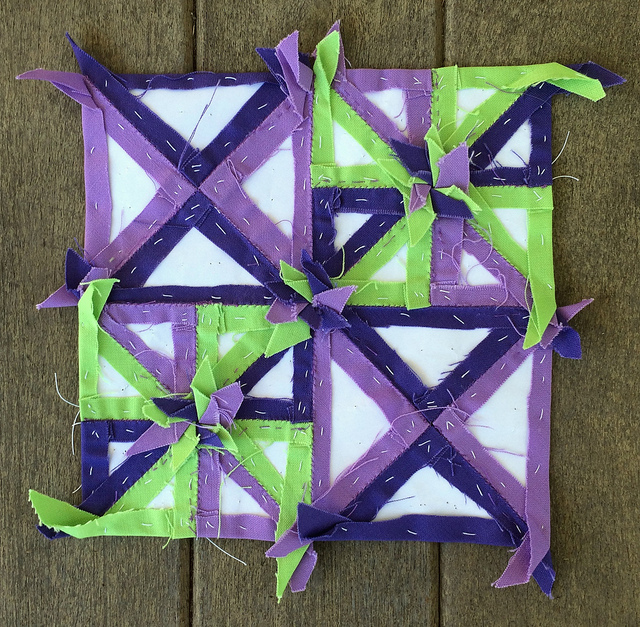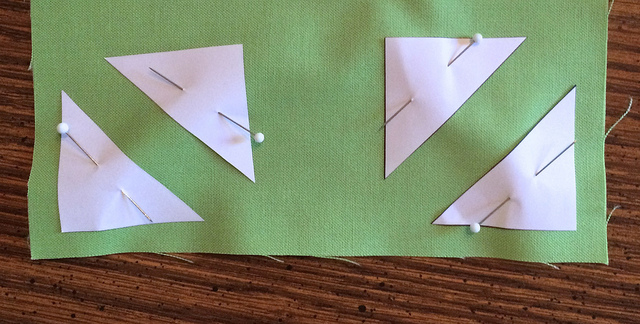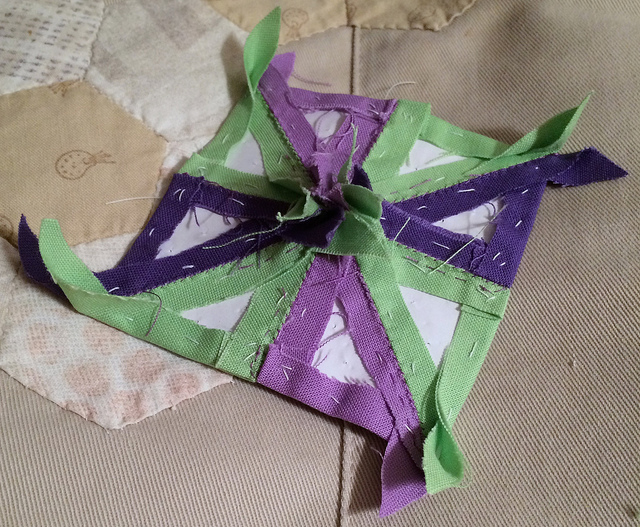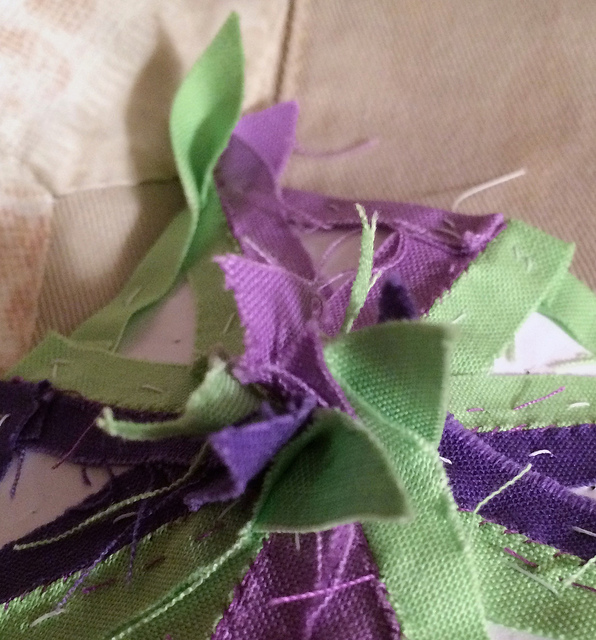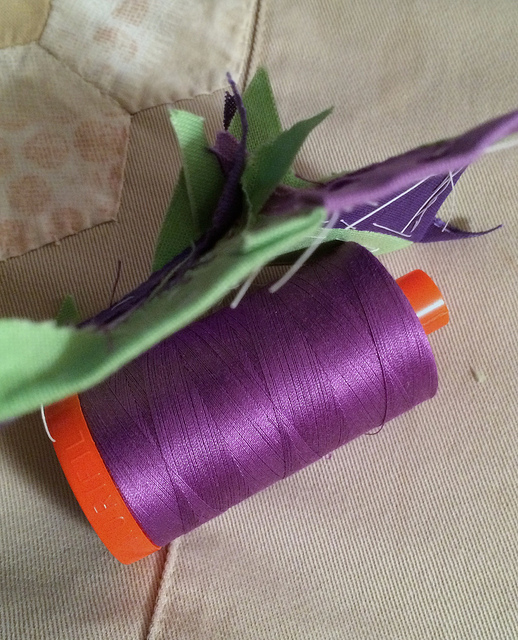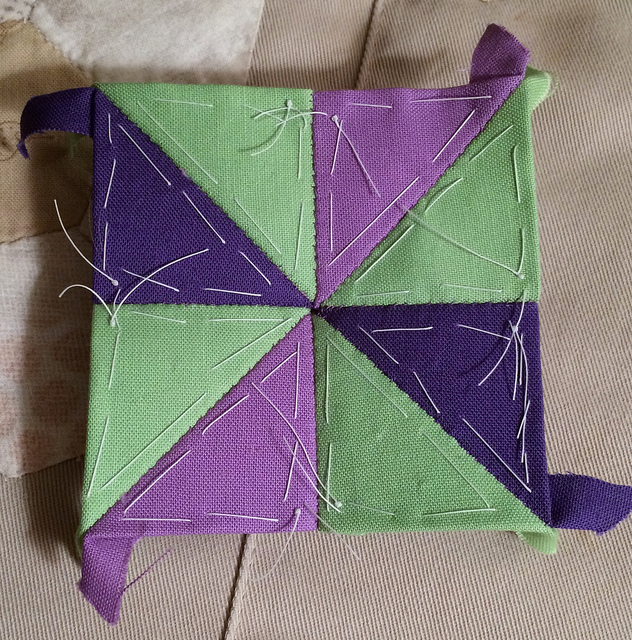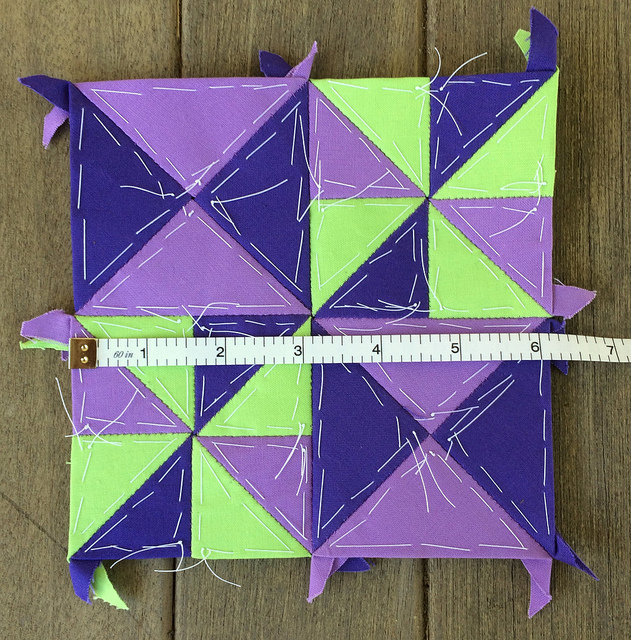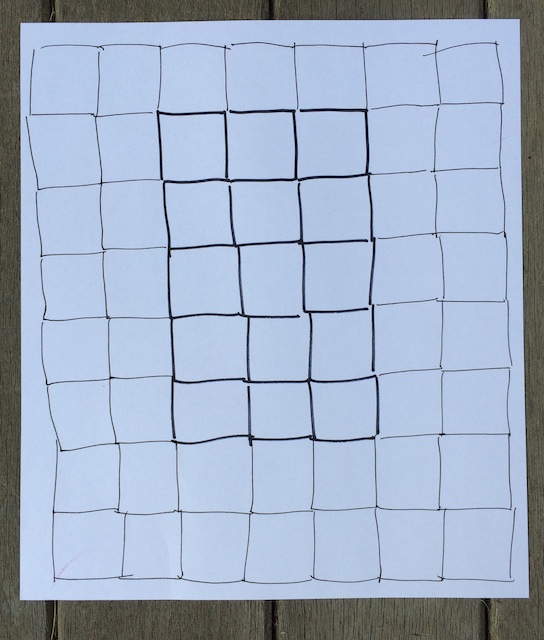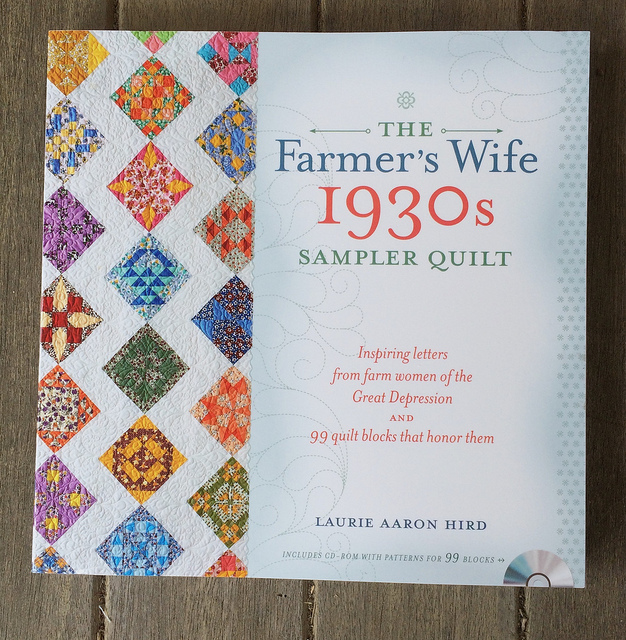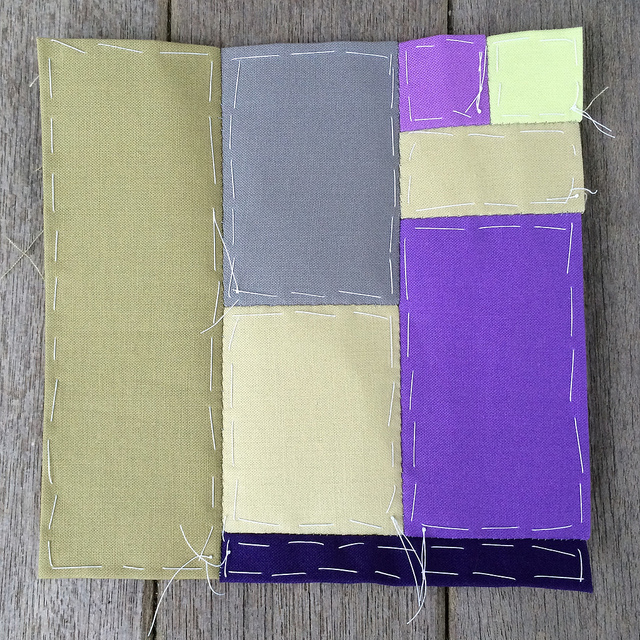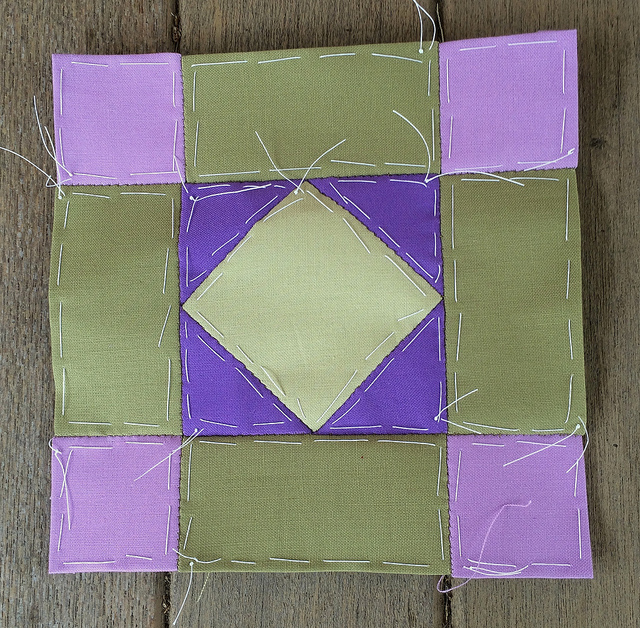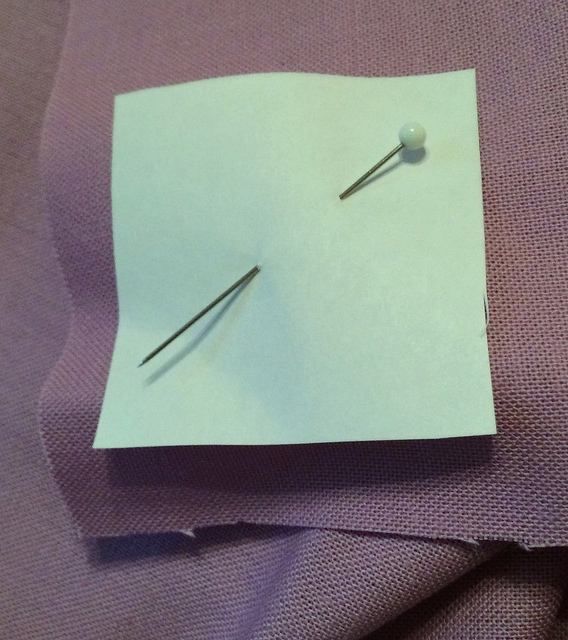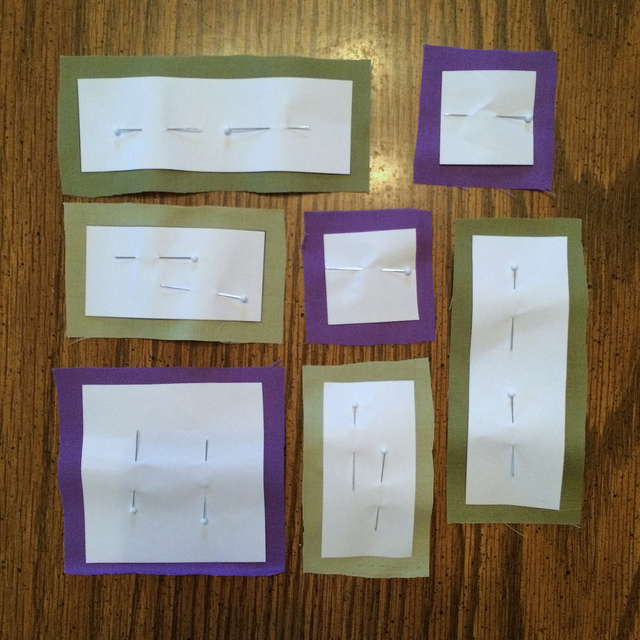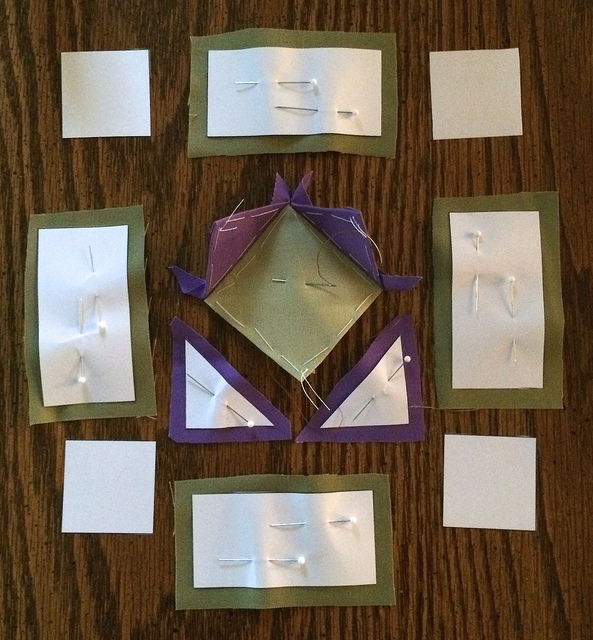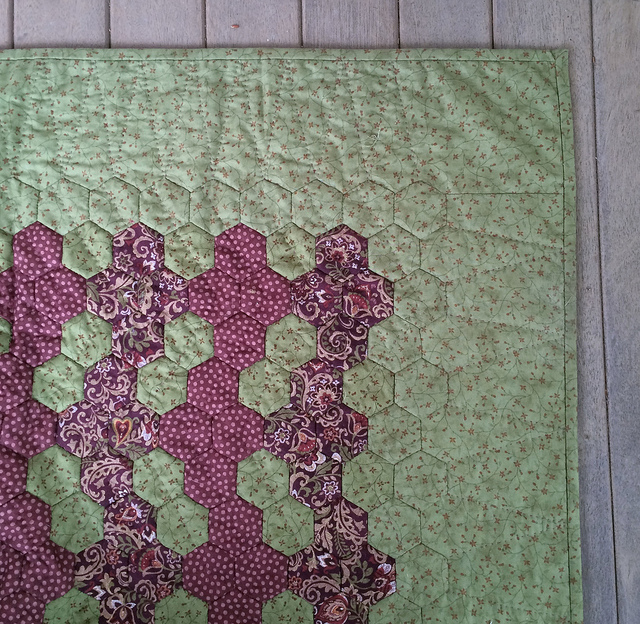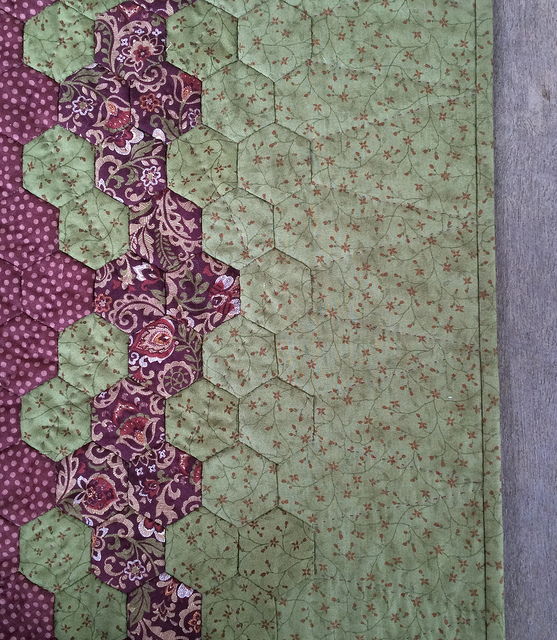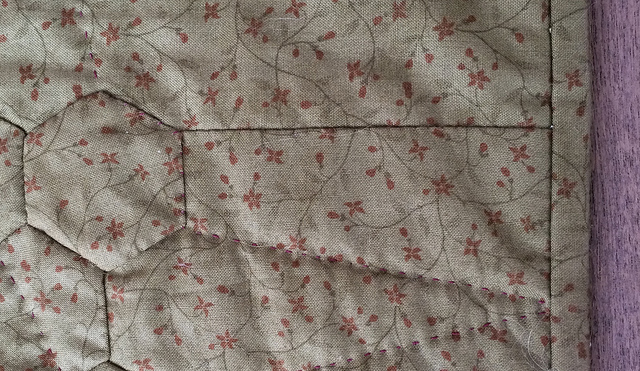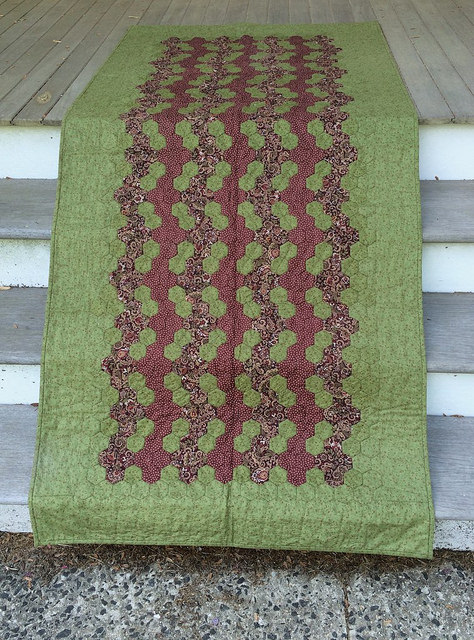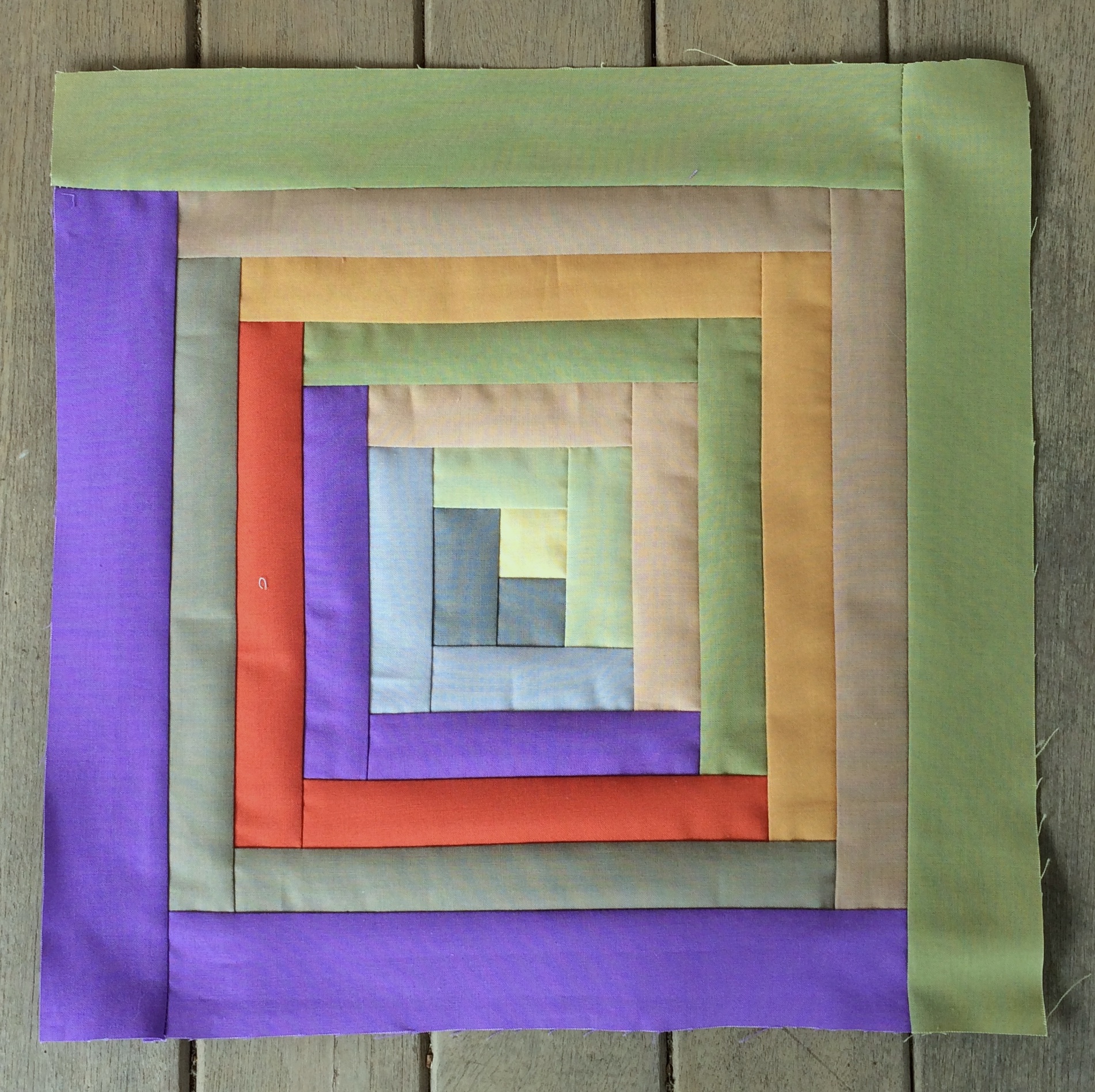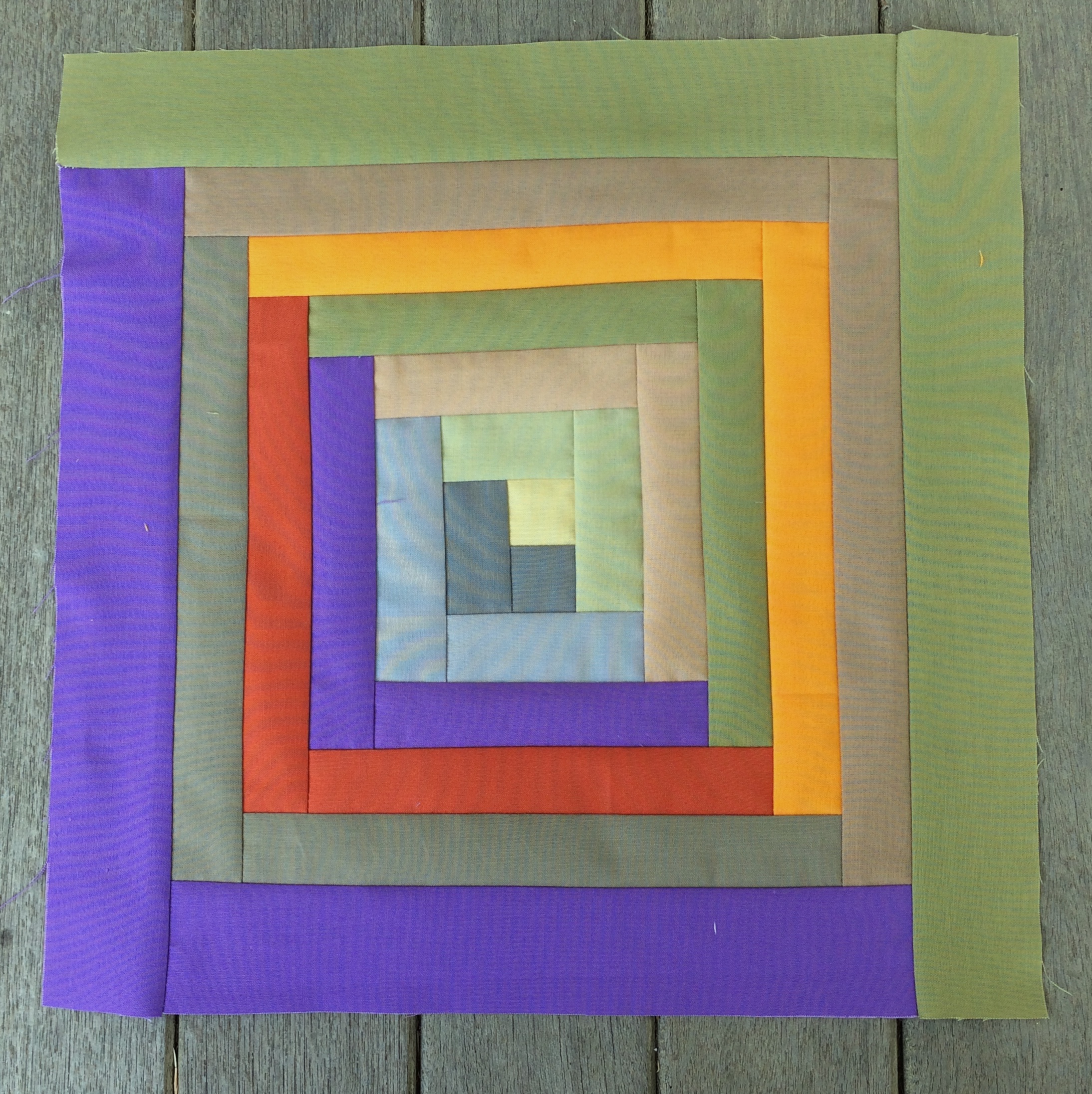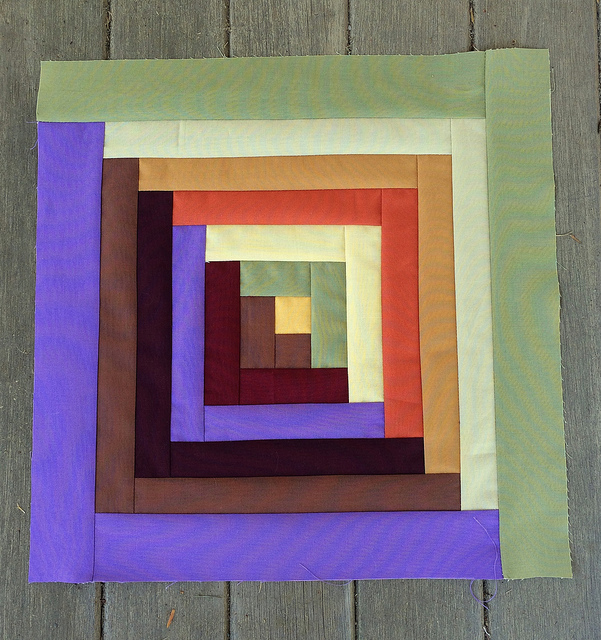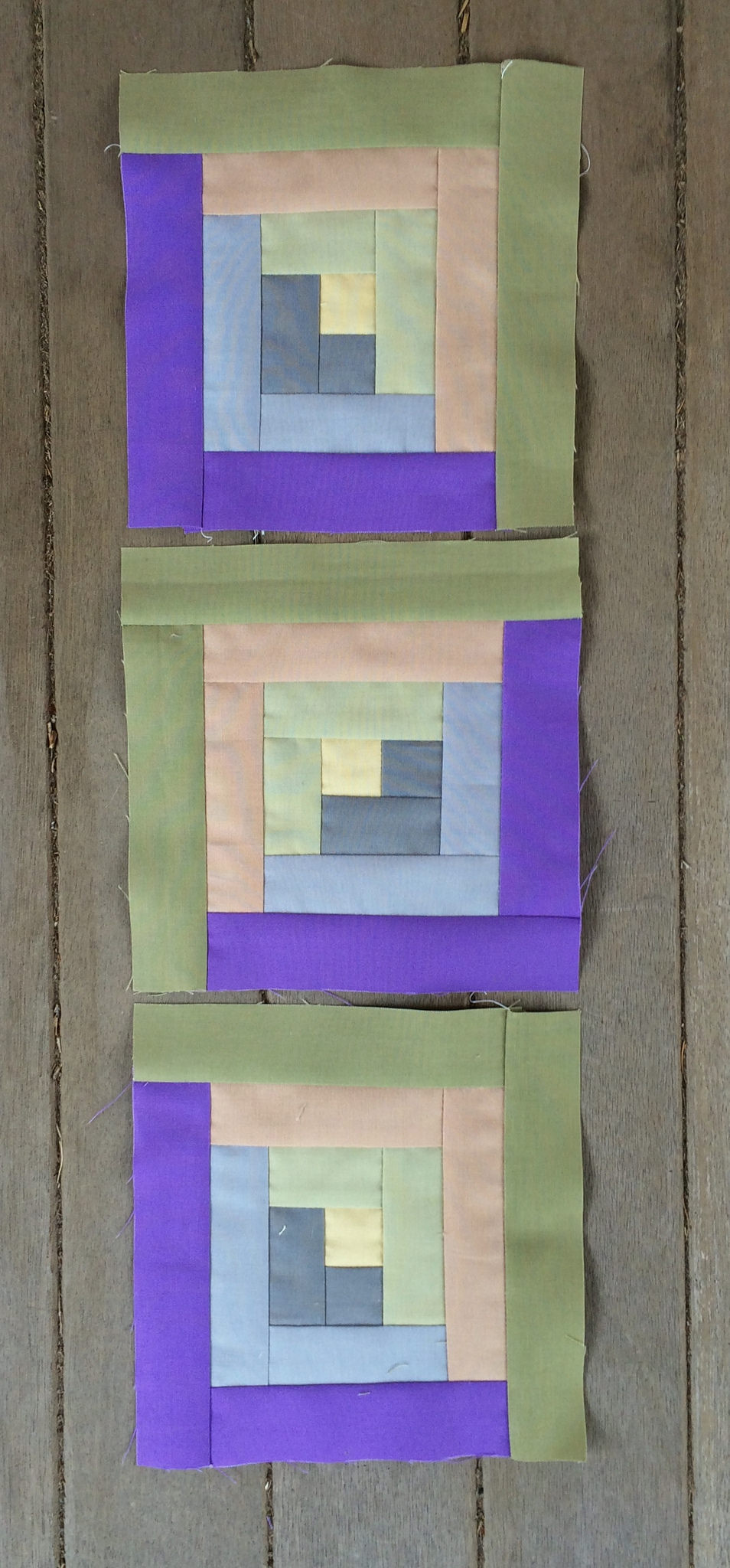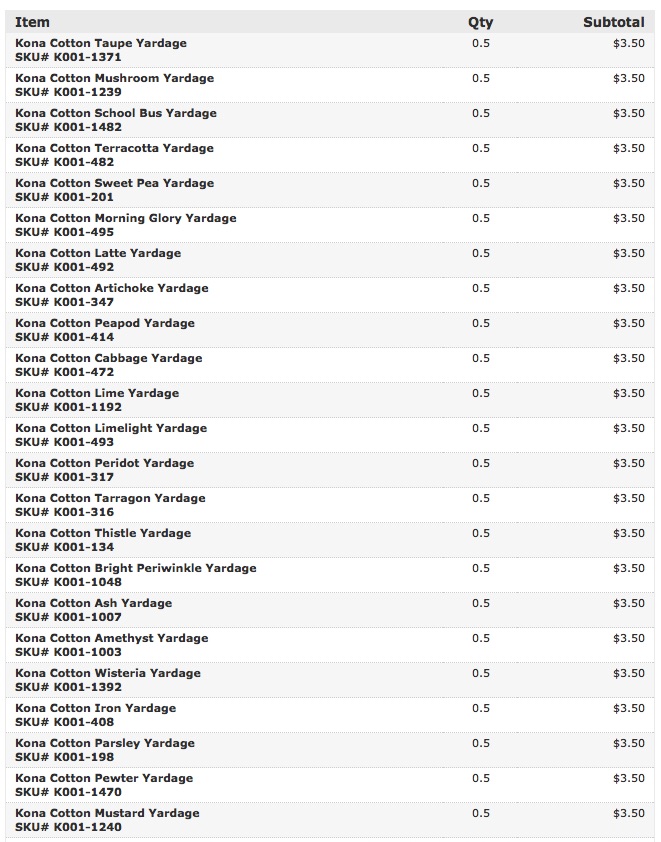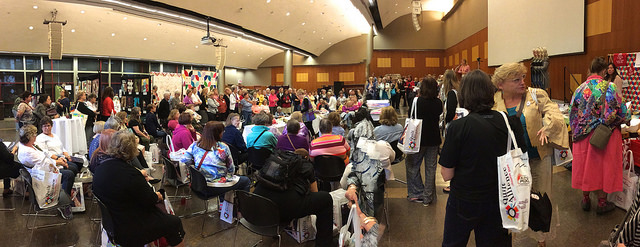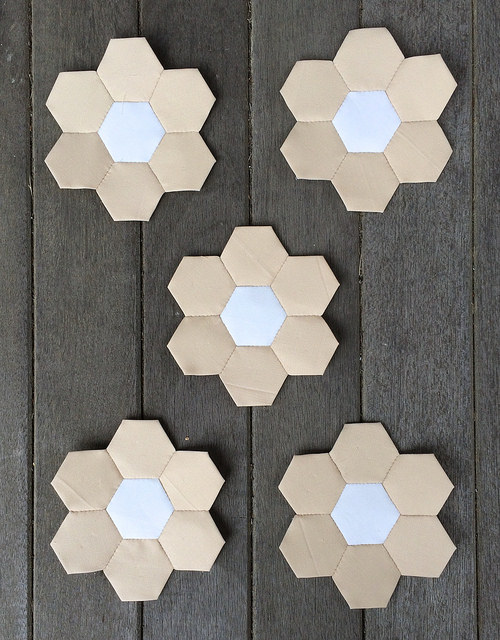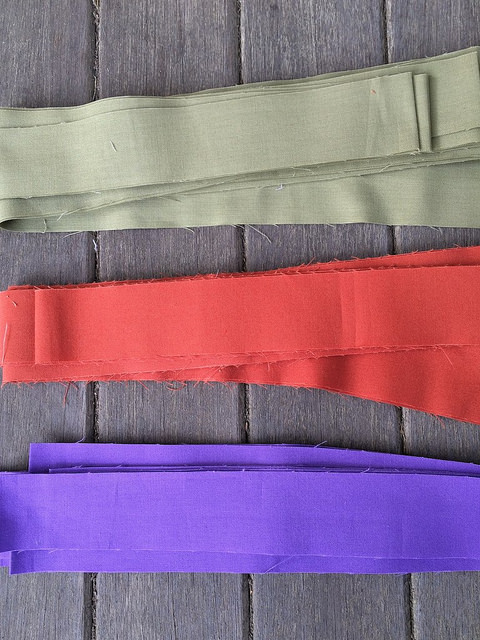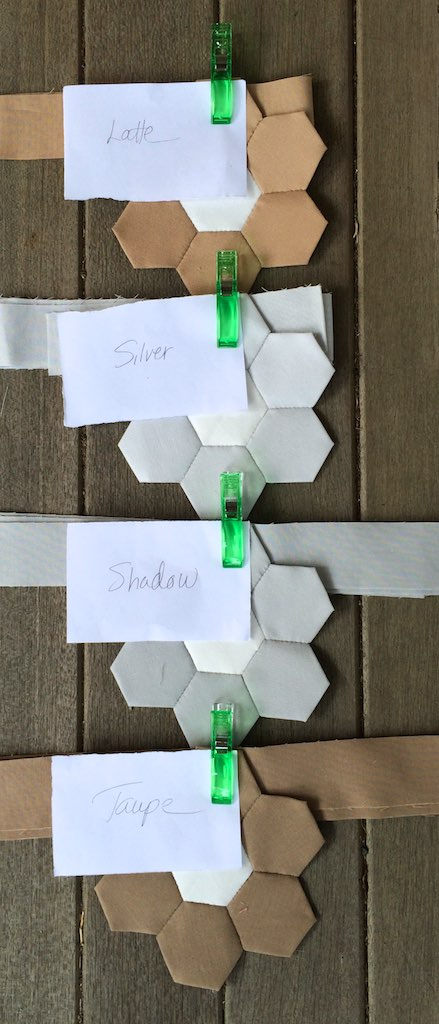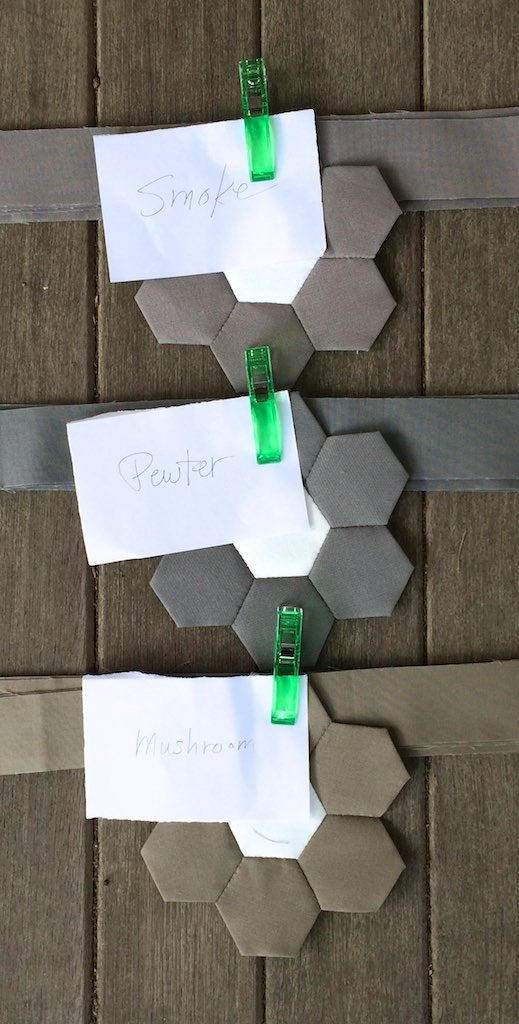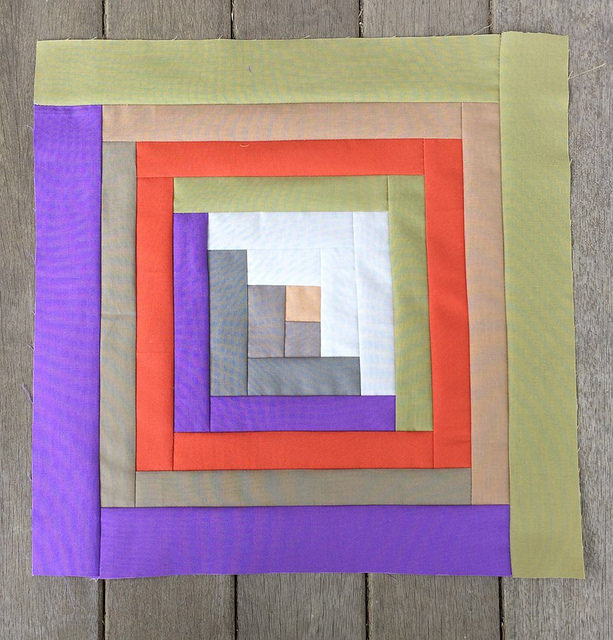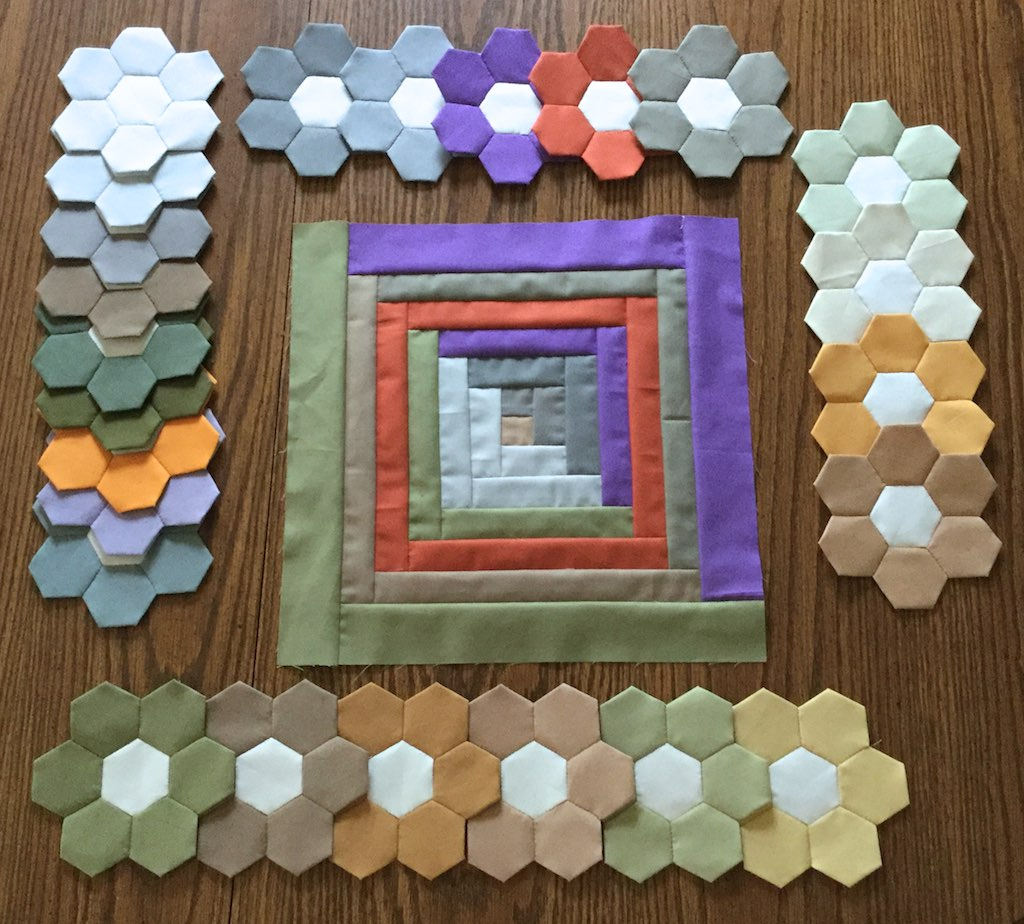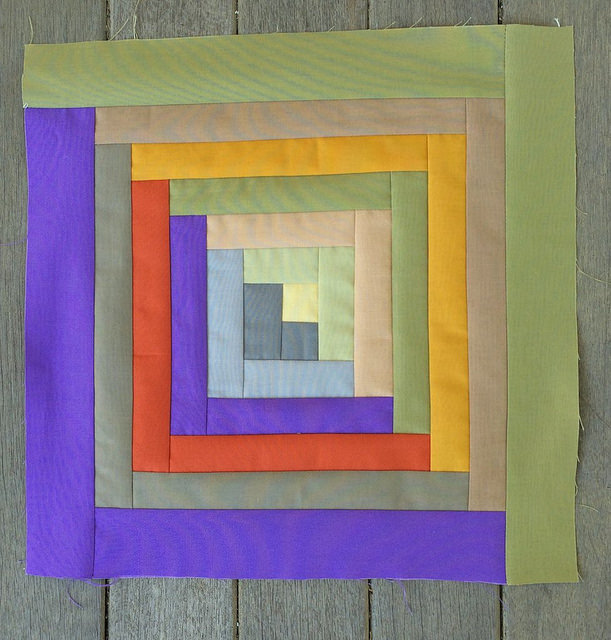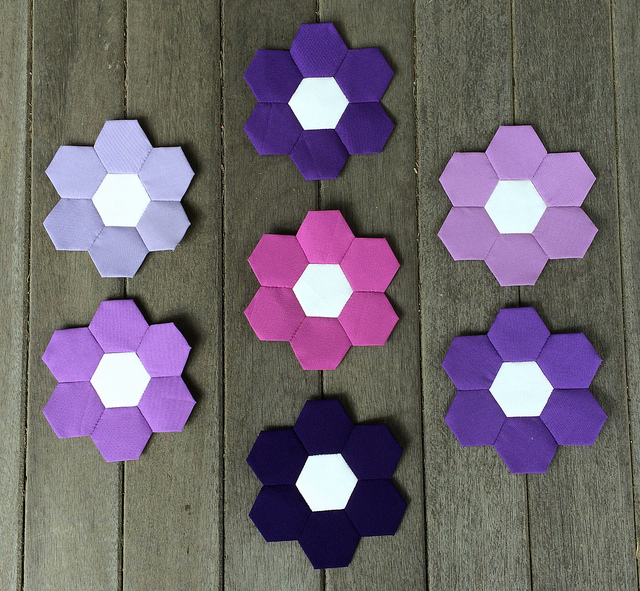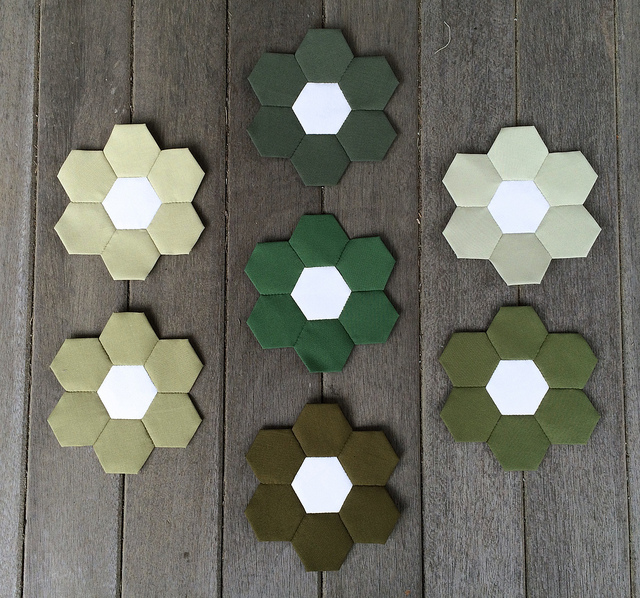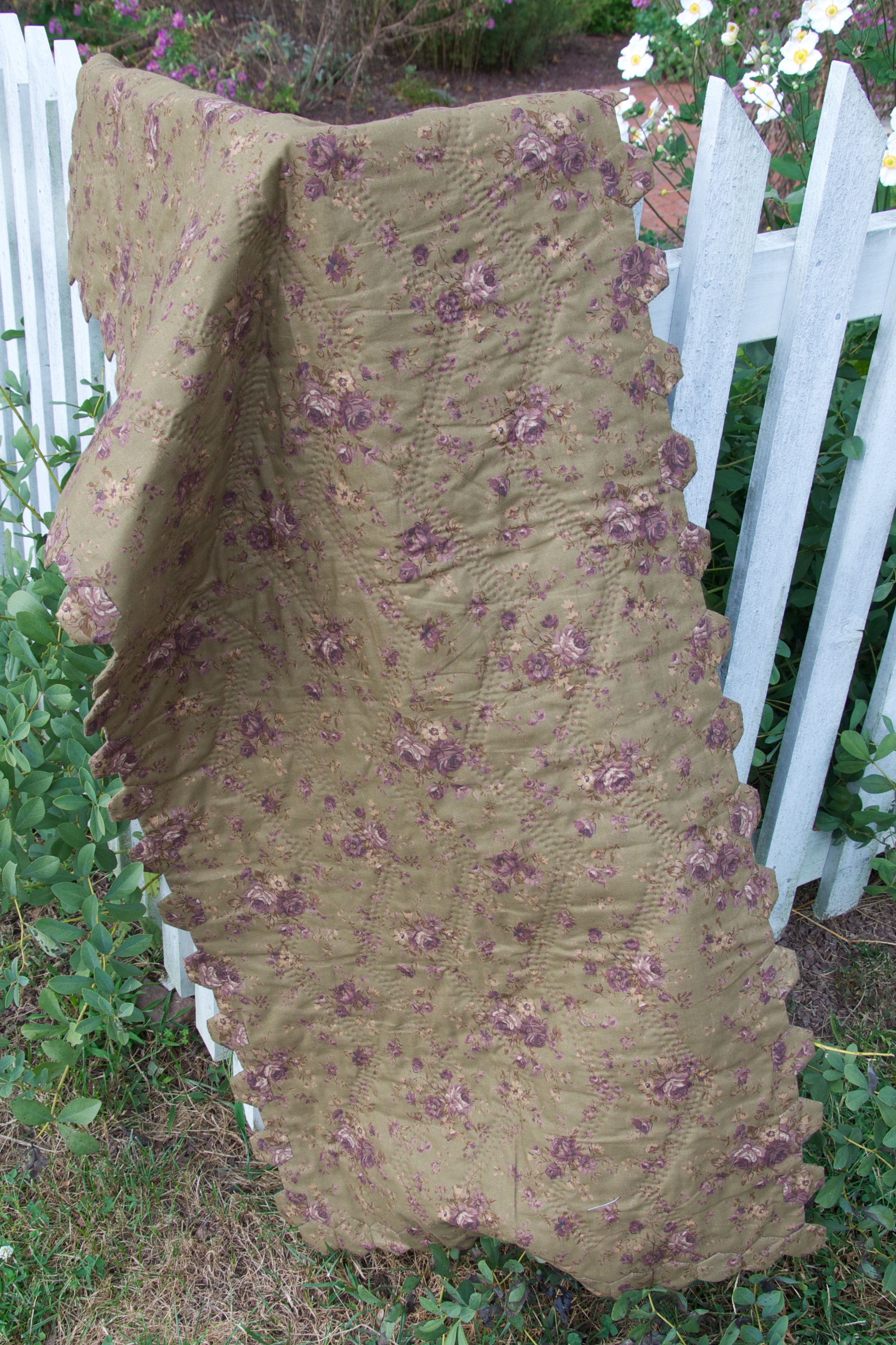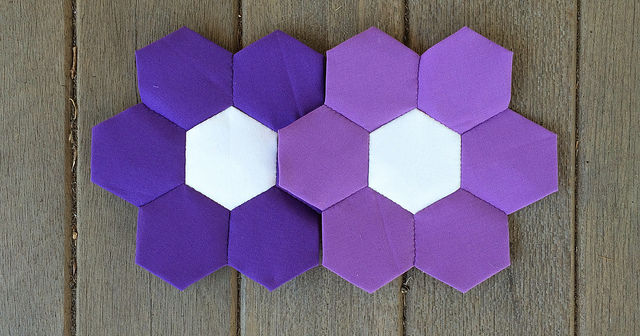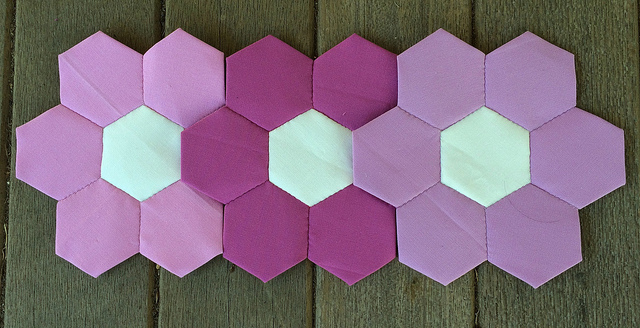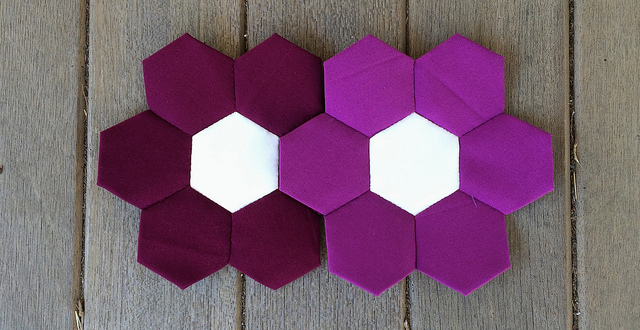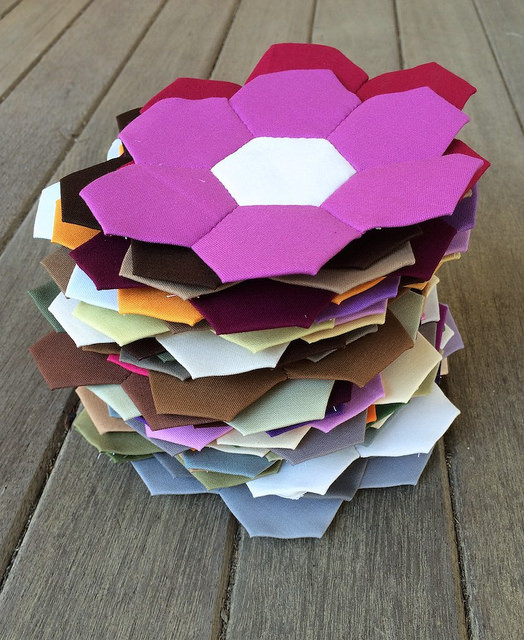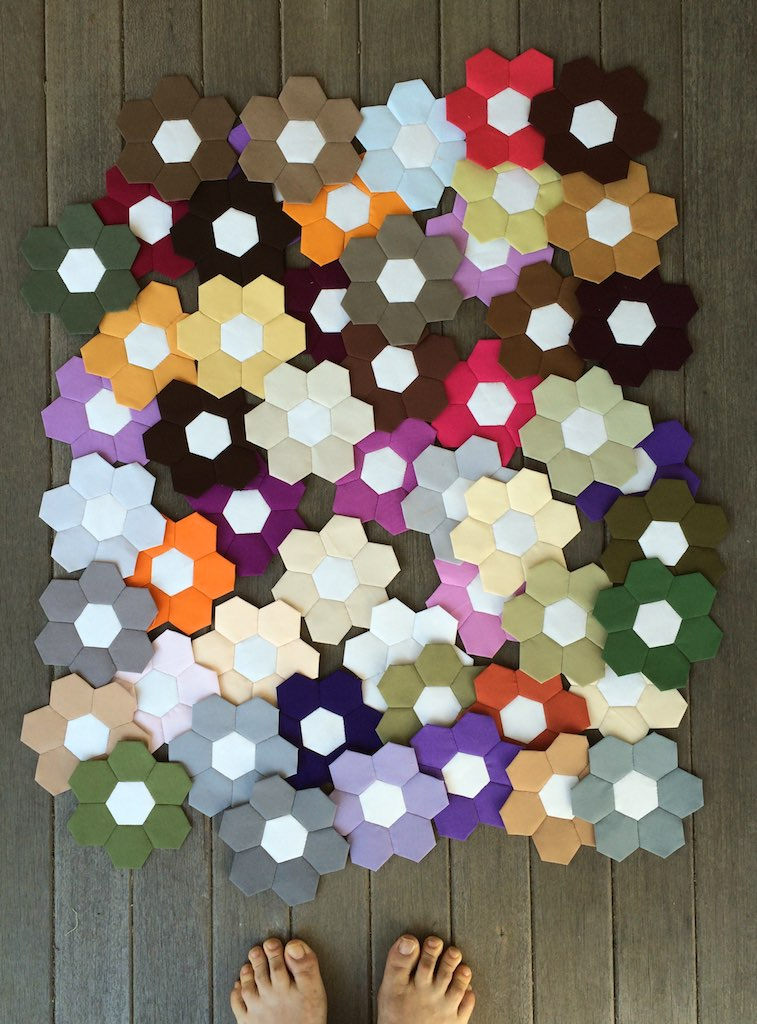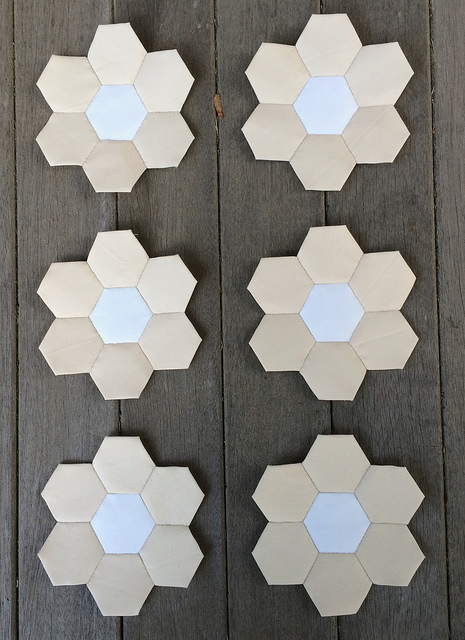The blocks are getting harder, and the heat is definitely on. In this installment of “The Farmer’s Wife Saga” I am going to show my two blocks for this week. I am also going to talk a little bit about my process. Then I will share my thoughts for the future of this quilt.
#14 Betty
Betty is made with the following Kona solids: Artichoke, Thistle, and Peridot.
#20 Caroline
Caroline is made with the follow Kona solids: Bright Periwinkle, Wisteria, and Cabbage.
Caroline from Behind
I share a photo of Caroline from the back side to begin the discussion of my process. This photo illustrates the complexity of Caroline. Get a load of all of those tails, especially those converging at the center of the block, and also at the centers of the two pinwheels which make up the upper right and lower left of the block.
Caroline is the first block composed entirely of triangles. This proved to be a challenge in terms of basting and matching up points at the center of the three locations mentioned above.
Here are a few things I was aware of as I worked on the triangles that make up Caroline:
Placing pins along the diagonal edge and placing the head of the pin to the right made it easiest for me to baste because the head of the pin was as far away as possible from my starting point.
I found it prudent to begin basting triangles at the 90 degree angle corner of the triangle to give myself a good start before tackling the corners that would produce the tails.
I was able to remove the pin on the smaller triangles after making only one additional basting stitch along the first side of the triangle. With the larger triangles I waited until I turned the first sharp corner to remove my pin.
I am still a little bit unsure about which side of the triangle fabric I should be placing uppermost when turning those acute angles.
I found the small red Clover clips to be very useful in holding the edges together when joining my pieces, especially for matching seams. (The above photo shows this process with Aunt, as I had not documented it with Caroline.) That is my lap by the way… one of my favorite photo staging areas for fine details.
Speaking of deTAILS, let’s talk about tails…
Man, they do stick up.
I could not imagine that I could tame this beast… the beast with eight tails.
I thought of clipping the tails, but somehow that seemed unnecessarily cruel, and somehow not right, as well as fraught with possibilities for regret if it did not go well. If you EPP, how do you deal with your tails?
Well, I finally decided to pay attention to one tail at a time and try to flatten each out in relation to the tail nearest it, and eventually I got them to nest. Then the application of some heat managed to put those tails in their places as flat as they could go. I am wondering if I should do a tiny bit of tacking with thread to keep them in place.
I think the points match up rather well considering how hard it is to see what you are doing with all of those tails wagging in your face when you do the stitching at the the intersection of all eight pieces.
I didn’t get out a timer for these blocks, but my best guess is that Betty clocked in at about three hours, and Caroline may have taken as many as five hours. Let’s not even talk about the time spent documenting and blogging because that doesn’t count. I do that because I must.
I have been paper piecing hexagons now for about two and a half years. In eight hours of time I imagine that I would have been able to cut, baste and assemble enough hexagons to cover ten times the area that these two little squares will cover, but that isn’t really the point. The issue is, do I want to continue spending my time this way, when there might be a better way to do this? Perhaps there is a more appropriate way to complete this project. At the risk of seeming shallow, I have to admit that part of my conflict comes not only from the amount of time this project will consume, but also from knowing that there is going to be nothing about the appearance of the finished product that will suggest that it was hand pieced. It will look like a machine pieced quilt. There is something about hexagons that say, to at least the experienced quilter, “I was hand pieced.” You can hear that declaration from twenty feet away. I like that.
I definitely want to continue with the QAL, but perhaps I should look at this as an opportunity to learn something new. Maybe I should be buying the Marti Mitchell templates and trying traditional hand piecing. It would be another way of relaxing with hand stitching. There is a lot of excitement for the templates in the QAL Facebook group discussion. I imagine that hand piecing with the templates would be faster than the EPP approach I am taking. Perhaps I should consider learning to do Foundation Paper Piecing. As much as it would tie me to the machine, which I hate, it would provide me with a new skill.
It is worth noting that my finished blocks are measuring slightly larger than the prescribed finished length. This error is between 1/16 of an inch and 1/8th of an inch. Luckily it is consistent. But I should take it into account when I go about finishing the quilt.
One of the things I worry about a little bit is how I am going to finish this quilt with sashing. I have pretty much rejected the idea of engineering my squares so I can recover the quarter inch seam allowance. It is something I don’t want to worry about as I baste. Plus if I am going to do the blocks with EPP, I want to EPP it all. I am considering drafting a sashing with a variety of gray fabrics that are light in value. I’ve done a few sketches, but if I go this route I am likely to drag out the old school drafting tools and draw out a portion of the sashing to scale. I may even “hide” some hexagons in the sashing to “prove” that the work is EPP.
In most likelihood I will continue with EPP at least until I have completed enough blocks to do a sample with EPP sashing.
Stay tuned.
I’d like to hear from you. If you are doing the Farmer’s Wife with EPP, how is it going for you? What challenges have you encountered? Do you have any plans for sashing?
I am joining in the fun of The Farmer’s Wife Link Party over at Gnome Angel. Thank you Angie Wilson for giving us the opportunity to share our blogs in this way.
I am also linking up with Jessica’s Monday Morning Star Count over at Life Under Quilts.
